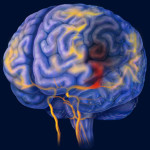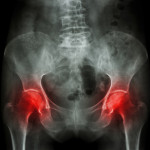Differentiating Temporal Lobe Epilepsy through Functional Neuroimaging

Epilepsy is a brain disorder in which the normal pattern of neuronal activity becomes disturbed, causing changes in behavior, sensation or awareness and sometimes convulsions, muscle spasms and loss of consciousness. These symptoms, which go under the umbrella of seizures, may last from a few seconds to a few minutes. This disorder may result from events…
Patella Adaptation to Long-Term Load Intake

The patella, commonly referred to as the kneecap, is a small bone located where the femur and the tibia meet. This structure plays a vital role in how the knee bends and, therefore, in most motions that require moving the leg. The patellofemoral joint is required to slide up when the knee extends and down…
Quantifying White Matter Development from Infancy to Early Adulthood

Research focusing on developmental changes of the human brain over time has dramatically advanced due to the improvement of novel imaging techniques. Diffusion tensor imaging (DTI) allows for an accurate analysis of the morphological modifications of white matter tracts connecting different brain regions. This technique provides for the visualization and quantification of the diffusion of water molecules in biological…
Segmentation of the Thalamus for the Treatment of Neuropsychiatric Disorders

The thalamus is a centrally-located brain structure responsible for controlling motor activity, sleep and the awake state of consciousness. However, its most important function is relaying information from the sensory receptors to the relevant cortical areas. Damage to this part of the brain results in incorrect processing of sensory information. Thalamic abnormalities have been found in…
The Influence of Genetics on Corpus Callosum Microstructure

The corpus callosum connects the left and right sides of the brain, allowing for communication between the two cerebral hemispheres. Abnormalities in the microstructure of this band of nerve fibers compromise the efficiency of motor, sensory and cognitive information transfer within the brain. Several studies have highlighted that genetic factors may play an important role in…
White Matter Lesions in Stroke Patients

Aging is associated with the appearance of increased white spots visualized on brain MRI scans. The presence of these anomalies, called white matter hyperintensities, characterizes elderly subjects as well as ischemic stroke patients, regardless of their age. White matter hyperintensities are thought to be caused by small vessel infarcts (restriction in blood flow) in the…
Stem Cells Contribute to Myocardial Repair after Renal Hypertension

The heart and the kidneys work very closely together: kidneys control blood pressure and filter the blood coming from the heart, eliminating the excess of chemicals and fluids in the form of urine. Several studies have shown that heart failure is a risk factor for renal disease and the two conditions may significantly impact each other…
Median Nerve Strain in Carpal Tunnel Syndrome

Carpal tunnel syndrome is a painful condition of the hand caused by performing frequent or repetitive tasks. The carpal tunnel is a narrow passageway on the palm side of the wrist made up of tendons, ligaments and nerves. The median nerve, which controls sensations and movement in the thumb and first three fingers, runs through…
Transporting Therapeutic Drugs across the Blood-Brain Barrier

The blood-brain barrier is an anatomical interface developed to separate and protect the brain from the circulatory system. The brain’s network of blood vessels allows the transport of neurotransmitters, glucose, essential nutrients and hormones across the brain, while it blocks other substances from penetrating. This barrier is so efficient at protecting the brain against the passage of unfamiliar…
Detecting Bony Abnormalities of the Hip Joint

The upper end of the femur fits into the acetabulum, a cup-shaped socket of the pelvis, and articulates with it, forming the hip joint. Hip pain can be caused by many different injuries or conditions such as inflamed tendons, joint swelling and hip fracture. A diagnosis of the bony abnormalities that are responsible for joint discomfort…
 AnalyzeDirect
AnalyzeDirect